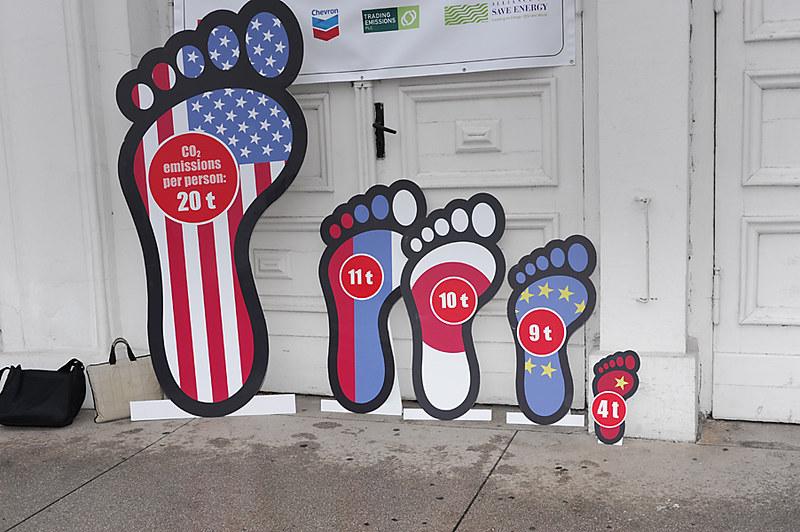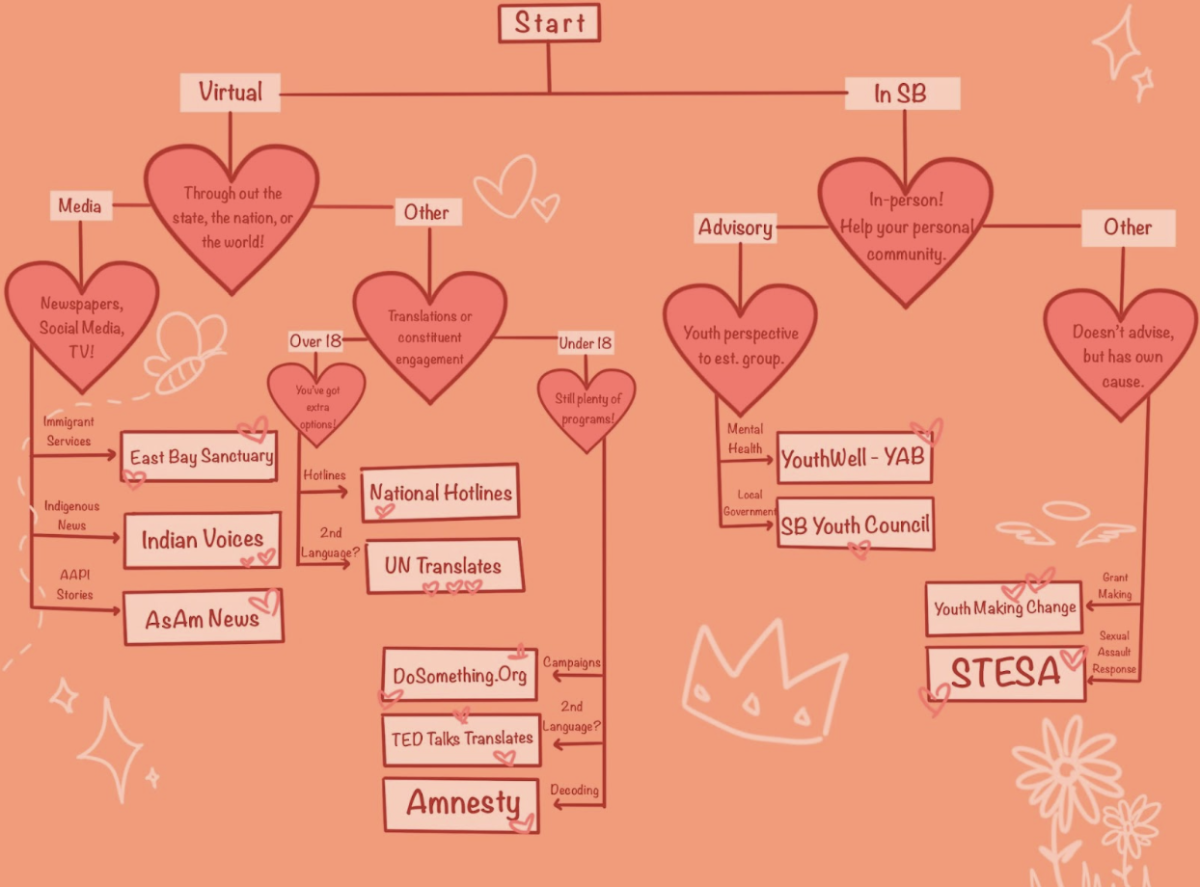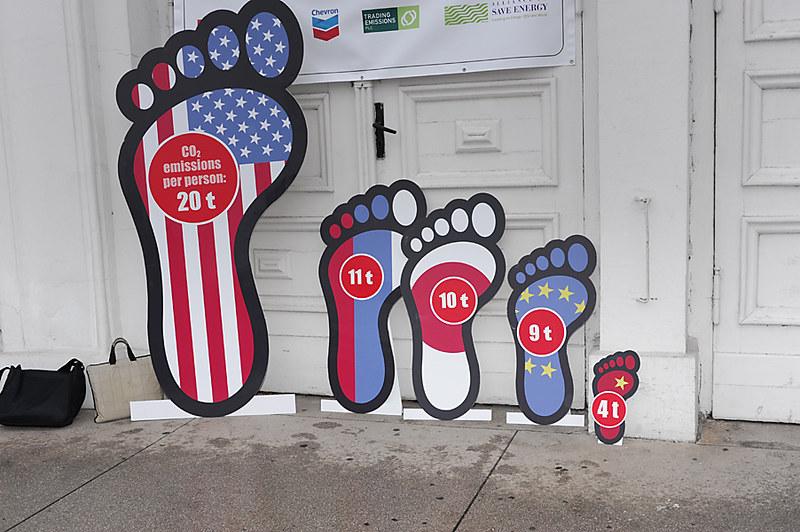
A carbon footprint is the total greenhouse gas emissions—including carbon dioxide, nitrous oxide, fluorinated gases and methane—that is generated by an individual, event, organization, service or product. Metaphorically, it is really how big of a footprint you leave behind on the earth. It is important to calculate this because greenhouse gas emissions have quite degenerative effects on the planet, most infamously, climate change. They trap heat, smog and air particles in the atmosphere and contribute greatly to issues like extreme weather, increased wildfires, global warming, and also makes individuals more susceptible to respiratory diseases—especially in cities where carbon footprints tend to be bigger—. Although carbon footprints are generally calculated for larger regions, it is important for an individual to become aware* of their carbon footprint in order to have the best chance of avoiding a rise in global temperatures. With the average carbon footprint for a person in the United States being 16 tons—one of the highest rates in the world—these little lifestyle changes can be the first step.
- Hold off on the cars
A car emits roughly 20 pounds of greenhouse gas into the atmosphere for each gallon of gasoline burned, and that still excludes the greenhouse gasses emitted for the production and distribution of the fuel for the vehicle. Simple and highly beneficial solutions: Walking, biking, carpooling or using public transportation, practicing eco driving, switching to an alternative fuel vehicle (electric), buying a used car or even scheduling car use for errands. These will indirectly put less of a strain on fuel demand and directly decrease your carbon footprint.
“Most student’s carbon footprint is high because of transportation. Every gallon of gas burned generates 22 pounds of CO2. This excess CO2 either builds up in the atmosphere, causing global warming, or gets absorbed by the ocean, causing ocean acidification. Carpooling with just one other person immediately reduces this impact by half! Better yet, try riding a bike for short trips and enjoy moving your body and feeling the sun and air on your face,” says SM AP Environmental Science teacher, Mr. Goettler.
- Eat less meat
Livestock releases a devastating amount of methane and nitrous oxide—which are greenhouse gases that are much stronger than CO2—into the environment. This deteriorates the ozone layer, causes extreme weather, makes us more prone to cancer, acidifies the ocean etc etc. On top of that, production, shipment, handling etf. of the food/water for the livestock, the livestock themselves and the clearing of land for the livestock all dramatically strains the earth and our carbon footprint on it. Not only will eliminating/reducing meat from your diet drastically decrease your carbon footprint, but it will aid a multitude of environmental and personal health concerns as well.
- Take less connecting flights
Global aviation accounts for a hearty amount of greenhouse gas emissions. Harvesting, transporting and using the large amounts of fuel needed to power an airplane for many hours is extremely deteriorative to the environment. The less flights you take, the better.
- Eat foods that are in season and local
Apart from the health benefits, consuming foods that are in-season and local also means that the product had to ‘travel’ less. This ties back to aviation greenhouse gas and the cons to continuous, lengthy plane travel. On top of that, heavy produce calls for more fuel needed to power a plane, boat and/or truck and the packaging for the produce comes from an industry that releases greenhouse gasses for its production. The solution is simple, sustainable, and supports the locals of the community.
- 5 R’s: Refuse, reduce, repair, rot, recycle
Refuse to create waste if you do not have to. Reuse as often as you can before giving it away or tossing it. Repair and reuse things before tossing or replacing them. Rot any food scraps and yard trimmings into compost. Recycle to balance the high and environmentally-strainful demand for plastic. The 5 R’s are all about cutting down, and that includes your carbon footprint.
“I switched from using disposable dryer sheets to reusable balls of wool for my laundry. I also stopped using single-use plastic Ziplock bags and purchased reusable silicone ones instead for snacks and lunch. Although these are small changes, making the switch from any single-use product to a reusable product is a great first step to reducing your impact on the planet,” says SM Junior Lily Landeros.
- Choose low-carbon activities
Switch out high-carbon activities like go karting or running on a treadmill for something natural like kayaking, playing a sport, hiking etc.. The swap from a gasoline powered activity to a low-carbon activity is just one of the simplest lifestyle changes to reduce our carbon footprint.
- Reduce house utility usage
Utility usage is one of the biggest strains on the environment and your carbon footprint because of the electrical generation needed to power so much of even just a single household. Instead of leaving it all behind to go off the grid and drop the problem, simple changes like insulating and sectioning rooms for AC and heating, switching to LED lightbulbs that are significantly more energy efficient, reducing household water usage and/or line drying your clothing are all great changes to start with. Not only do all these tricks reduce your carbon footprint and aid environmental conservation but they also tremendously lower your utility bill.
- Switch to sustainable clean energy
While reducing overall energy usage is a beneficial habit, switching to more sustainable or clean energy allows for a less sacrificial lifestyle change. Switching to solar, hydropower geothermal energy, using an electric car or installing LED lightbulbs into your household are all clean, energy efficient options that will greatly reduce your carbon footprint.
- Embrace a minimalist lifestyle
Minimize purchases of new items. The production, shipping and usage of products all require a great expenditure of energy. This energy—whatever it may be—ultimately results in CO2 emissions into the environment and increases your carbon footprint. Keep it simple: buy less, buy local and buy unpackaged goods
- Support climate action organizations/nonprofits
If you cannot afford to, do not have the time to or do not have the drive to implicate these lifestyle changes into your everyday routine/life, a simple and hugely beneficial alternative would be to support climate action organizations. They take active steps everyday to better conserve the environment. There are a number of ways to support a climate action organization/nonprofit in your area or broader. Send them an email/message and see what you can do.
The list does not end here, so if you want to make bigger changes and have a larger impact in aiding the environment, you can look into more actions to reduce your carbon footprint everyday. Like with most lifestyle changes, you do not have to pick up a whole lot of new habits all at once and overwhelm yourself. One thing at a time for a steady change. Even switching out some old habits for gradual new ones has an effect and makes a difference. It’s about starting.
*Check out a credible, online, carbon footprint calculator to get your footprint results in minutes and learn the best lifestyle changes you can make that are unique to your situation and best for environmental conservation.














































